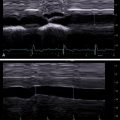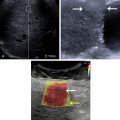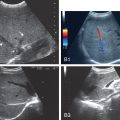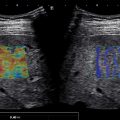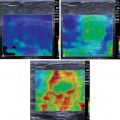Introduction
Acoustic radiation force impulse (ARFI) is a continually developing technology that provides biomechanical information concerning tissue elasticity (stiffness) by emitting a push pulse, which generates laterally propagating shear waves (SWs). In addition to elasticity, viscosity provides biomechanical information concerning the pathologic state of tissue, which is a different property than elasticity alone. However, most ultrasound (US) elastographic models use a linear elastic model to describe tissue mechanical properties, and only tissue elasticity is quantified. Dispersion is related to the frequency dependence of the shear wave speed (SWS) and is affected by the attenuation of SWs because of the viscous component of the tissue. If a tissue is dispersive, the SWS and the attenuation of SWs will increase with frequency. Analysis of the dispersion properties of SWs can therefore serve as an indirect method for measuring viscosity. As of early 2022, dispersion imaging, a new imaging technology, has been developed by a few US vendors including Shear Wave Dispersion Imaging (SWD; Canon Medical Systems, Japan), Viscosity PLUS (Vi PLUS; Hologic, U.S.A.) and Elastance (Columbus, Ohio, U.S.A.). , In this chapter, the feasibility of liver viscosity evaluation is reviewed based on the findings of both animal studies and clinical evaluation in humans.
Physics
A homogeneous biological tissue can be modeled using viscoelastic models such as the Voigt and Maxwell models, which consist of a spring and a damper, and the Zener model, which consists of two springs and a damper. Using the Voigt model as an example to illustrate the frequency dependence of SWS, the SWS <SPAN role=presentation tabIndex=0 id=MathJax-Element-1-Frame class=MathJax style="POSITION: relative" data-mathml='cs’>??cs
c s
at SW frequency ω calculated by the Voigt model is as shown below , :
cs(ω)=2(μ2+ω2.η2)ρ(μ+μ2+ω2.η2),
where ρ , μ , and η are the density, shear elasticity, and shear viscosity of the medium, respectively.
When zero is substituted for shear viscosity η in equation (1) , that is, a perfectly elastic tissue is assumed and viscosity is ignored, SWS <SPAN role=presentation tabIndex=0 id=MathJax-Element-3-Frame class=MathJax style="POSITION: relative" data-mathml='cs’>??cs
c s
can be transformed to a simple relationship with shear elasticity:
cs(ω)=μρ.
Stay updated, free articles. Join our Telegram channel

Full access? Get Clinical Tree




